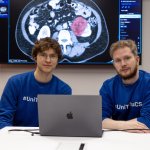
News • Clinically validated framework
AI helps detect kidney cancer faster
A novel machine-learning-based solution analyses CT images and helps radiologists detect both malignant and benign lesions in the kidney more quickly and reliably.

A novel machine-learning-based solution analyses CT images and helps radiologists detect both malignant and benign lesions in the kidney more quickly and reliably.
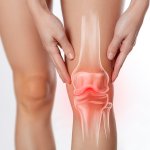
Thousands of NHS knee replacement operations are cancelled at short notice every year, many for avoidable reasons, a new study shows. This costs the NHS millions of pounds and increases waiting times.

With Taipei City Government's support, six Taipei companies will showcase innovative biotech and medical device solutions at MEDICA 2025 (Nov 17–20, Düsseldorf), advancing healthcare with speed and precision.
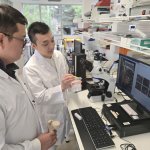
Integrating liquid metal nanomaterials into a ceramic scaffold could improve the durability and biocompatibility of orthopedic implants, while also combatting antimicrobial resistance.
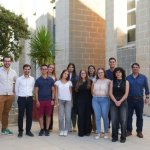
The heterogeneity of critical illnesses like sepsis, ARDS, and trauma creates immense challenges. A new, unified way to classify patients aims to improve treatment.
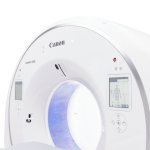
Canon announces the launch of the Aquilion One / Insight Edition 160, a new addition to its computed tomography (CT) portfolio. The new system made its debut at Röntgenveckan (Stockholm, Sweden).

HighlightsBundling 2D and 3D functionality for greater intraoperative control, the Ziehm Vision RFD 3D reduces the need for postoperative CT scans and costly corrective surgeries. It is equipped with Ziehm Iterative Reconstruction to minimize fan and metal artifacts in 3D reconstruction, so far only known from CT imaging. This makes the Ziehm Vision RFD 3D ideal for high-end orthopedic,…
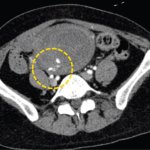
Postpartum hemorrhage is a leading cause of maternal death. A new method could help predict which women experiencing severe bleeding after giving birth most likely need life-saving interventions.
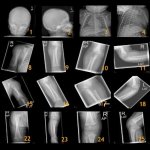
Covid-19 has intensified domestic violence rates worldwide, with children among the most vulnerable victims. At the ECR 2025 radiology congress in Vienna, Dr Rick R. Van Rijn presented compelling insights into how radiologists can identify non-accidental trauma (NAT) in children through systematic imaging approaches. From comprehensive skeletal surveys to specific neurological imaging protocols,…
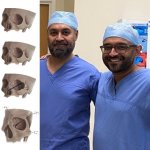
Using a keyhole surgery approach, surgeons have found a new way to access previously difficult-to-reach brain regions with faster recovery times. With the help of 3D modelling technology, the neurosurgeons succeeded in removing complex tumours from the cavernous sinus through the eye socket, avoiding complex brain surgery and enabling their patients to make a quicker recovery.
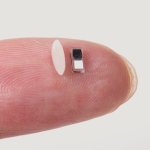
Smaller than a grain of rice: US engineers have developed a pacemaker so tiny that it can fit inside the tip of a syringe — and be non-invasively injected into the body.
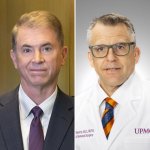
Giving separated blood plasma improves outcomes in patients with traumatic brain injury (TBI) or shock, whereas unseparated or “whole” blood may be best for patients with traumatic bleeding.
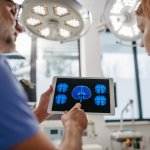
A novel sensor placed on a patient’s head registers nanometric expansions of the skull in each cardiac cycle in real time to measure intracranial pressure more accurately and non-invasively.

HighlightsThe world's first Twin Robotic X-ray scannerSet new standards in advanced musculoskeletal and trauma imagingOptional with Real3D and True2scale Body ScanPrecise insights through unique automationEfficient workflows around your patientsComprehensive diagnoses with multiple proceduresDetector size:43 × 43 cm (RAX detector)35 × 43 cm (MAX wi-D)24 × 30 cm (MAX mini)
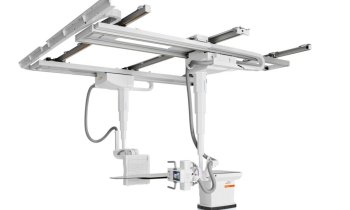
HighlightsThe world's first Twin Robotic X-ray scannerSet new standards in advanced musculoskeletal and trauma imagingOptional with Real3D and True2scale Body ScanPrecise insights through unique automationEfficient workflows around your patientsComprehensive diagnoses with multiple proceduresDetector size:43 × 43 cm (RAX detector)35 × 43 cm (MAX wi-D)24 × 30 cm (MAX mini)

Highlights:CIARTIC Move is a new class of self-driving mobile 3D C-arm. It has the potential to address operational challenges related to intraoperative imaging caused by staff shortages and overloaded surgical teams in the OR.*Move automatically: Accelerate* and standardize 2D and 3D imaging in the ORMove independently: Avoid idle times and delays in the ORMove effortlessly: Reduce the physical…

Traumatic brain injury (TBI) increases dementia risk, but the reasons are poorly understood. Now, a study explores the role of the brain's blood vessels as drivers of Alzheimer's disease.
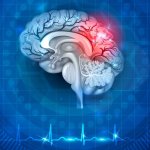
Traumatic brain injury can lead to post-traumatic epilepsy (PTE). Researchers focus on a specific brain receptor to better understand and prevent PTE in at-risk patients.

The world of comic book heroes and villains is filled with trauma of all kinds. A new study explores how these tales of hardship can help find better treatments for mental health issues in children.
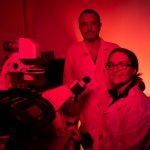
Light can change biological processes and affect health. For example, new research finds that red light can lower rates of blood clots that can cause heart attacks, lung damage and strokes.

More than just a sports injury: A new study shows that head trauma may activate latent viruses, leading to neurodegenerative conditions such as Alzheimer’s disease and Parkinson’s disease.
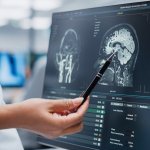
A traumatic brain injury (TBI) affects children differently than adults, a new study shows. The researchers found that paediatric patients are more prone to damage of the smallest brain vessels.
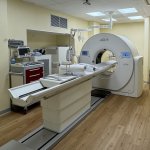
United Imaging are excited to share that, in partnership with Fora S.p.A., an industry leader with over 50 years of expertise in delivering advanced diagnostic technologies to the Italian market, Policlinico Casilino Hospital will join the company's global network. Demonstrating its commitment to innovation and growth, the hospital has selected the industry-leading 640-slice CT scanner to…

Karolinska University Hospital is among the most transparent hospitals worldwide. Using AI, the hospital can accurately demonstrate where lives have been saved, and harm avoided for patients.
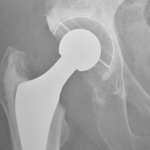
New research has identified hip implant materials with the lowest risk of needing revision, helping hospitals, surgeons and patients to choose what hip implant to use for replacement surgery.
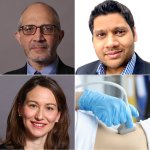
Ultrasound plays a pivotal role in the assessment of organ transplant patients. It enables physicians to safely and easily assess progress, identify complications and resolve problems, as well as deliver long-term monitoring. The value of ultrasound in the transplant space was highlighted in a session at ECR 2024, covering liver, renal, pancreas, paediatric and multi-organ transplants with…

Tractor beams are making the jump from science fiction to reality: Researchers are developing rays of light that can pull particles toward it, to minimize the trauma caused by current biopsy methods.
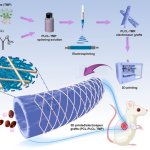
A new 3D graft printing technique offers a potential solution to reduce thrombosis and restrain aneurysmal dilatation post-surgery, with potential for improving cardiovascular disease treatments.

Researchers developed a new type of anticoagulant whose action can be rapidly stopped. This reversible activity could revolutionise the use of anticoagulants in surgery or other applications.
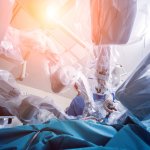
Although robots are common to assist in surgery, robotic assistance is not routinely used for lung transplants. However, this might change soon, according to an expert speaking at the ISHLT meeting.
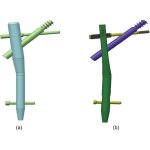
Traditional fixation techniques often fall short in addressing the mechanical challenges of unstable intertrochanteric femur fractures. A new nail aims to fix this issue.

An ageing population and modern lifestyle conditions have greatly increased the case numbers for hip arthroplasty. To prevent complications, it is important for orthopaedic surgeons to identify high-risk patients and take proper precautions. At the Heraeus symposium at DKOU, two experts explored the special measures that should be taken to ensure better outcomes for elderly and frail patients.
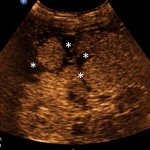
Stagnation, under-use, unfulfilled potential: At the EUSEM congress in Barcelona, leading emergency physician Dr Joseph Osterwalder describes how e-FAST (Extended Focused Assessment with Sonography for Trauma) – a key point-of-care ultrasound technique for trauma – has changed over the last two decades, and not necessarily for the better.

Breast surgery is a traumatic experience for a woman, no matter whether breast-conservation surgery (BCS) or a mastectomy. Trauma levels are greatly enhanced, if pathological evaluation findings of an excised breast tumour following a lumpectomy suggest that additional cancer may still be in the margins, and a second surgical procedure is required. A new system with the ability to accurately…

If healthcare professionals could get support making fast-paced, life-critical decisions from an AI tool, more lives could be saved, according to new research results from Sweden.

Barbie should expand her medical and scientific careers into areas where women and other under-represented groups remain a minority, suggests a study published in the Christmas issue of The BMJ.

Researchers from the University of Birmingham have designed and developed a novel diagnostic device to detect traumatic brain injury (TBI) by shining a safe laser into the eye.
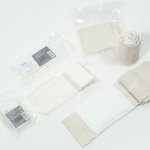
In the face of military conflict, CSD, a Taiwan-based medical consumables manufacturer, plays a critical role in producing combat-ready bandages and gauzes for aiding rescue operations.
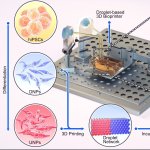
University of Oxford researchers demonstrated that neural cells can be 3D printed to mimic the architecture of the cerebral cortex. This could be used in patients after brain injuries.

Global medtech company Olympus has named Dr. John de Csepel to the role of Chief Medical Officer (CMO), effective immediately.

The commonly-held belief that attempting to suppress negative thoughts is bad for our mental health could be wrong, a new study from scientists at the University of Cambridge suggests.
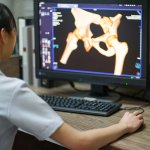
Identifying victims of major disasters remains a significant challenge for investigators. Often, identification can take weeks or longer but new approaches are paving the way for greater accuracy and quicker identification whilst preserving the body without unnecessary invasive investigation. An expert session at ECR heard about how new imaging technology can help with disaster victim…

A tiny robot which can travel deep into the lungs to detect and treat the first signs of cancer has been developed by researchers at the University of Leeds.
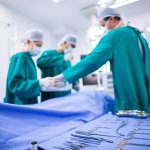
Surgeons will need to tackle three major challenges with the most potential to reduce major causes of death and improve access to surgical care, according to an international group of experts.
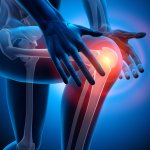
For young athletes with lateral disc meniscus injuries, a new treatment approach yields promising results, according to researchers from Osaka Metropolitan University.

Caregivers at the University of Texas Southwestern Medical Center in Dallas, Texas, have developed a programme designed to facilitate recovery by geriatric patients following hip fracture surgery. The Returning Seniors to Orthopedic Excellence (RESTORE) programme is designed to provide stellar comprehensive collaborative co-managed care for older adults with orthopaedic injuries.

Radiation exposure in diagnostic and interventional radiology is steadily being reduced, but some important parameters have hardly been taken into account so far, says Dr Kerstin Jungnickel. The medical physics expert explains how patient-specific protocols can improve radiation protection and outlined new findings on the radiosensitivity of certain body regions and their impact.
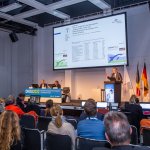
Arthroplasty for femoral neck fractures has seen enormous progress in recent years, but complications due to infections are still a major problem. With good preparation and the right technique, however, orthopaedic surgeons can take away much of the horror of this scenario.

A new blood product combining red blood cells and plasma in one bag is associated with a better survival from a penetrating major trauma injury, a new study has found.

HighlightsThis integrated system combines premium CT and ceiling-mounted angiography technology. The perfect diagnostic and treatment set-up for high-risk procedures in various interventional segments such as:Interventional OncologyTrauma / Neuro / StrokeGeneral VascularAdditional or Backup CTDetector size: 30 × 30 cm / 30 × 40 cmThe system is available with two different CT…
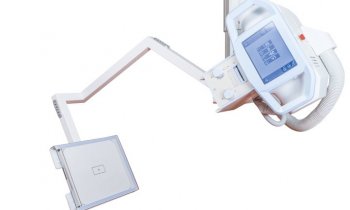
HighlightsVersatile solution for trauma applicationsFast and efficient workflow Easy manual positioning with motorized support for Z-movement Large open workspace with a fixed focus-detector distance of 135 cm Integrated cable management C-Arm dept of 55 cm Integrated Dose Area Product Meter (DAP) Acquisition station with large DICOM calibrated touch screen display

Racism, xenophobia, and discrimination are important influences on health globally, but have so far been overlooked by health researchers, policymakers, and practitioners, finds new research.
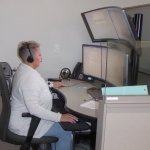
In their pursuit of solutions for pandemic challenges, a US hospital system applied telemedicine principles to respiratory therapy – with impressive results.
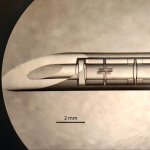
Engineers from EPFL and the University of Strasbourg have developed a surgical needle whose trajectory can be corrected on the fly, thanks to a flexible tip controlled with a simple button.
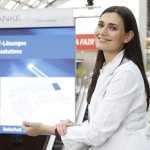
At this year's Medica (Nov 14-17), the Health IT Forum offers a special focus on how health IT can contribute to more sustainability in healthcare, and on optimising treatment workflows.
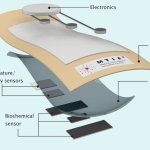
Researchers at Nottingham Trent University and Nottingham University Hospitals NHS Trust have developed a new biosensor capable of accurately monitoring the condition of a chronic wound.
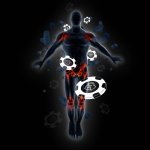
The main goal of arthroplasty is to relieve pain, improve and restore joint function and recover quality of life. Periprosthetic joint infection remains a complication that has to be taken seriously.
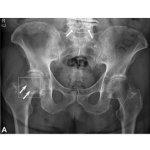
Fujifilm partners with Gleamer to integrate an AI software called BoneView into its X-ray imaging systems to assist radiologists and emergency clinicians in the diagnosis of skeletal fractures.
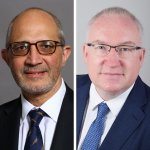
Rapid technical advances in ultrasound and increasingly tight healthcare budgets call for a change in ultrasound practice, experts explained in a session at the ECR in Vienna. Two experts presented possible models for the next two decades.
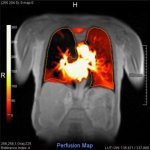
Advances in image post-processing and contrast-enhanced techniques have widened the scope of possibilities for MRI and ultrasound vascular imaging, experts showed in a dedicated course at the ECR Overture.
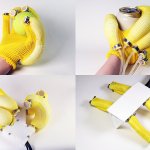
Scientists have created a design and fabrication tool for soft pneumatic actuators for integrated sensing, which can power personalized health care.
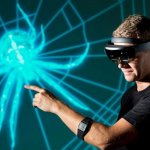
Mental disorders are among the leading causes of ill-health and disability worldwide, and the demand for a viable solution to battle the mental health crisis has risen. The past two decades have witnessed the emergence of extended reality (XR) as a tool for investigation, assessment, and management in mental healthcare.
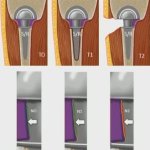
Periprosthetic joint infection (PJI) can be an enormous challenge for orthopaedists and trauma surgeons. Antibiotic-loaded bone cement is an important element in a prevention strategy.

According to new research, whole-spine MRI commonly demonstrates isolated thoracolumbar injuries in children with suspected abusive head trauma.
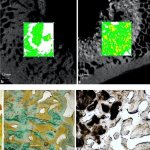
Loosening hip implants can cause major damage to the bone and a simple replacement won’t suffice to carry the load during movements. “To solve this problem we have to turn to innovative technologies such as bioprinting. Scaffolds are required that – while adapting slowly – offer long-term stability,” says Professor Dr Dieter Wirtz, Director of the Department of Orthopaedics and Trauma…

At the BIR virtual congress, spinal imaging specialist Professor Elizabeth Dick focused on approaches and protocols for a range of spinal injuries and discussed assessment and imaging strategies, choice of modalities, and other key factors.
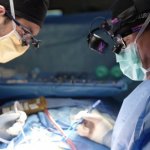
Wearable technology has become an important part of medicine, from tracking vital signs to disease diagnosis. In surgery, wearable technologies can now assist, augment, and provide a means of patient assessment before, during and after surgical procedures. Wearable technologies are applied before the patient even reaches the operating room, for example in prehabilitation, i.e. pre-treatment…

This year as every year, the very best in global HealthTech will be converging on Dusseldorf for the Medica trade fair. With more than 127 companies attending the event from November 15-18, France will have one of the largest contingents there. Grouped together under the brand umbrella of “French Healthcare”, the French MedTech companies will be presenting their many innovations to industry…
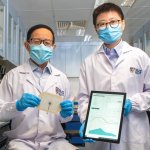
A research team led by Professor Lim Chwee Teck from the National University of Singapore’s (NUS) Department of Biomedical Engineering and Institute for Health Innovation & Technology (iHealthtech), in collaboration with clinical partners from Singapore General Hospital, has developed a smart wearable sensor that can conduct real-time, point-of-care assessment of chronic wounds wirelessly…

Post-mortem CT (PMCT) increasingly supports pathologists, radiologists and forensic investigators particularly in cases of gunshot fatalities, mass casualties, decomposed and concealed bodies, fire deaths, diving deaths, non-accidental injury cases, and road traffic deaths, in which CT can indicate a pattern of injuries. In Dublin this August, the post-mortem (autopsy) technique was discussed…
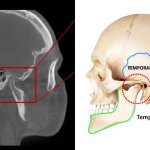
Researchers at the Skolkovo Institute of Science and Technology (Skoltech) led by Professor Dylov and their colleagues from First Pavlov State Medical University of St. Petersburg, Russia, have developed a brand-new approach to the task of 3D image segmentation — figuring out the contours of the constituent parts in a complex structure. While their so-called negative volume segmentation…
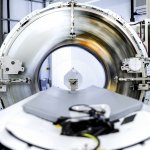
The U.S. Food and Drug Administration (FDA) cleared the first new major technological improvement for Computed Tomography (CT) imaging in nearly a decade. “Computed tomography is an important medical imaging tool that can aid in diagnosing disease, trauma or abnormality; planning and guiding interventional or therapeutic procedures; and monitoring the effectiveness of certain therapies,” said…

Researchers at the University of Southampton have invented a new way to generate human cartilage tissue from stem cells. The technique could pave the way for the development of a much-needed new treatment for people with cartilage damage. Cartilage acts as a shock absorber in joints, but it is susceptible to damage through daily wear-and-tear, or trauma from sports injuries and falls.
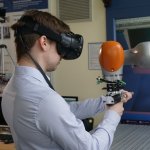
Trainee trauma or orthopaedic surgeons have limited chances to practice hip replacement surgery before their first hands-on case. To change this, a team in the Dynamic HIPS project aim to improve this by creating a dynamic hip replacement simulator for future surgeons to practice the intervention and develop a reality-based feel for the procedure.

GreenBone Ortho, a company specialising in bone regeneration, announces that it has achieved its aim of recruiting 15 patients into the GreenBRIC study. GreenBRIC study is a prospective, open label, single-arm, First-in-Human clinical investigation, in male and female patients, aged between 18 and 70 years, undergoing surgery to correct bone defects using GreenBone Implant, specifically for iliac…

A study showed that women are underrepresented in oncology, neurology, immunology, cardiology, hematology; whereas men underrepresented in trials related to mental health, musculoskeletal disease and trauma, and preventive care.
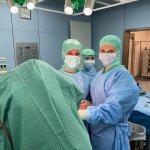
Currently, 25% of the junior physicians in Germany are female – which in international comparison puts the country in one of the top spots. However, only 5% of head of department positions in German university hospitals are held by women and not even 10% of orthopaedics professors are women.
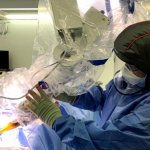
A breast cancer therapy that requires just one shot of radiotherapy is as effective as traditional radiotherapy, and avoids potential damage to nearby organs, according to a paper by UCL experts.

Two clusters of brain cells compete to promote either the persistence or disappearance of traumatic memories, according to a new study conducted in mice. The findings could provide important insights into human conditions such as post-traumatic stress disorder (PTSD), anxiety disorders, and associated problems such as alcohol use disorder (AUD) that can arise from the persistence of traumatic…
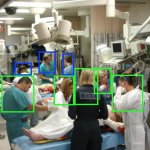
Computer scientists at the University of California San Diego have developed a more accurate navigation system that will allow robots to better negotiate busy clinical environments in general and emergency departments more specifically. The researchers have also developed a dataset of open source videos to help train robotic navigation systems in the future. The team, led by Professor Laurel Riek…

Some clinicians are concerned that post-traumatic stress disorder (PTSD) diagnosis has risen throughout Western society since the late 1980s. Is this correct? And if so, has the true incidence of PTSD really spiralled out of control, or has it simply become overdiagnosed? Experts debate the issue in The BMJ this week. PTSD is a serious and uncommon condition resulting from severe trauma, but it…

The Elisabeth-TweeSteden Hospital (ETZ) based in Tilburg and Waalwijk in the Netherlands is adopting a new digital training platform. It helps clinical staff optimize the use of its electronic patient dossier (EPD) system, Epic. The healthcare organization is rolling out Ancile Solutions’ uPerform platform after successful completion of an initial project in 2020. ETZ is a leading clinical…
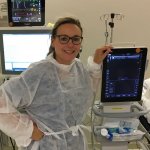
Due to the coronavirus, hospitals and medical staff developed new work practices involving, in acute settings, social distancing, rigid use of personal protective equipment (PPE), handwashing, and disinfection of equipment every day. Additionally, portable, highly-mobile and versatile equipment came to the fore in point-of-care (POC) – particularly when wards and operating theatres are spread…

Joint cartilage usually regenerates very poorly. The matrix of cartilage (scaffolding) contains very few cells in deep layers. Moreover, joint cartilage is highly isolated: there are neither regenerative cells in the immediate vicinity that could migrate into the site of the defect and trigger repair, nor vessels that could transport regenerative cells to the cartilage. Unsurprisingly,…
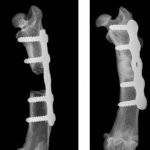
Researchers at Lund University in Sweden, in collaboration with colleagues in Dresden, Germany, have developed a way of combining a bone substitute and drugs to regenerate bone and heal severe fractures in the thigh or shin bone. The study, published in the research journal Science Advances, was conducted on rats, but the researchers think that the method in various combinations will soon be…

Could surgical procedures for hip or knee arthritis be improved? IT specialists at Leipzig University Hospital’s Innovation Center for Computer-Assisted Surgery (ICCAS), and physicians in the Department of Orthopaedic, Trauma and Plastic Surgery department, analysed and optimised the operating room (OR) setup, legwork and instruments handling. We asked project manager Juliane Neumann, at…
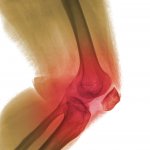
There is currently no cure for osteoarthritis, but a group of scientists believe they’ve discovered a method through which a simple knee injection could potentially stop the disease’s effects. These researchers showed that they could target a specific protein pathway in mice, put it into overdrive and halt cartilage degeneration over time. Building on that finding, they were able to show that…
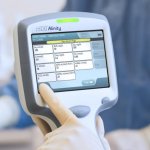
Abbott has received 510(k) clearance for the first rapid handheld traumatic brain injury (TBI) blood test, which will help clinicians assess individuals with suspected mild TBIs, including concussions. The test will run on Abbott's handheld i-STAT Alinity platform. Tests results are available within 15 minutes after plasma is placed in the test cartridge. TBIs, including concussions, are an…
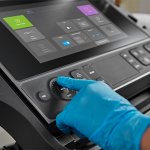
This July, Fujifilm Sonosite launched Sonosite PX, its newest ultrasound system, in the midst of the Covid-19 pandemic. Diku Mandavia, M.D., Chief Medical Officer of Fujifilm Sonosite, sat down with sonographer and Sonosite’s Director of Marketing Development Jodi Miller to discuss how Sonosite’s newest ultrasound system can help frontline health care workers combat the pandemic and why…

Getting computers to “think” like humans is the holy grail of artificial intelligence, but human brains turn out to be tough acts to follow. The human brain is a master of applying previously learned knowledge to new situations and constantly refining what’s been learned. This ability to be adaptive has been hard to replicate in machines. Now, researchers at the Salk Institute have used a…
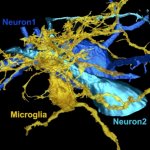
Researchers have discovered that microglia cells constantly survey the brain to prevent spontaneous seizures.
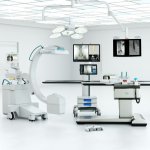
At this year's virtual RSNA congress, Ziehm Imaging showcases its leading portfolio of mobile C-arms and advanced imaging solutions. Highlights on display include the Ziehm Vision RFD Hybrid Edition in combination with Therenva’s EndoNaut solution for advanced endovascular 3D intraoperative navigation as well as the Ziehm Vision RFD 3D, one of the most successful 3D mobile imaging solutions in…
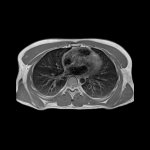
Low, light and with a field strength: 0.55-tesla with added new digital technologies. Indeed, this is a very new class of MRI scanner created by Siemens Healthineers. We interviewed Christiane Bernhardt, Vice President of Magnetic Resonance Marketing & Sales, Business Line MR, at Siemens Healthineers, about the technologies behind this development, plus its advantages and applications.
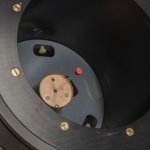
Magnetic resonance imaging (MRI) is indispensable in medical diagnostics. However, MRI units are large and expensive to acquire and operate. With smaller and cost-efficient systems, MRI would be more flexible and more people could benefit from the technique. Such miniature MRI units generate a much weaker signal that is difficult to analyze, though. Researchers at the Göttingen Max Planck…
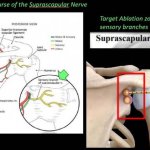
A novel outpatient procedure offers lasting pain relief for patients suffering from moderate to severe arthritis in their hip and shoulder joints, according to a study presented at the annual meeting of the RSNA.
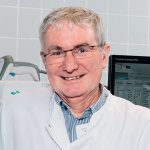
The academic teaching Karlsruhe Hospital, at the University of Freiburg, is the largest hospital providing tertiary care in the Middle Upper Rhine Valley. Every year, 63,000 in-patients and 180,000 out-patients are treated in the 1,500-bed facility with 50 departments and 30 out-patient clinics. Inevitably, a hospital of this size has a central lab. We spoke with Dr Horst Mayer, managing senior…
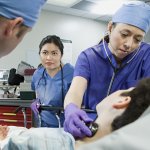
In an emergency, point-of-care-testing can provide results in minutes. However, sources of error must be understood to ensure result accuracy and confident diagnosis (particularly important during the current pandemic). Medical teams frequently use POCT devices to assess acutely ill patients; a hospital’s diagnostic laboratory is responsible for the analysers, plus training non-laboratory…

An up-and-coming gene therapy for blood disorders. A new class of medications for cystic fibrosis. Increased access to telemedicine. These are some of the innovations that will enhance healing and change healthcare in the coming year, according to a distinguished panel of clinicians and researchers from Cleveland Clinic. In conjunction with the 2020 Medical Innovation Summit, Cleveland Clinic…

On the occasion of this year's World Sepsis Day, we spoke with Elena Sukhacheva, Ph.D., director of medical and scientific affairs at Beckman Coulter, about the status quo and outlook on sepsis diagnostics. With the severity of sepsis symptoms, it’s easy to comprehend why it is invaluable to diagnose this disease properly and in a timely manner. Dr Sukhacheva takes an in-depth look at…

Patients who need surgery to fix major bone fractures use fewer opioid pills after their procedure if they're reminded of their values – and those reminders don't necessarily need to come from a doctor, according to a new study published in the Journal of Medical Internet Research. “We showed that opioid medication utilization could be decreased by more than a third in an at-risk patient…

There are at least 10 risk factors that appear to have a significant impact on a person’s likelihood of developing Alzheimer’s disease that could be targeted with preventative steps, new research suggests. Focusing on these factors, which include cognitive activity, high body mass index in late life, depression, diabetes, and high blood pressure, could provide clinicians with an evidence…
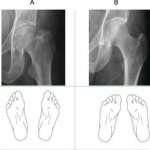
Dr Francis Zarb, senior radiography lecturer at the University of Malta, outlined challenges in correctly positioning patients needing musculoskeletal imaging. During our interview, he also offered a brief insight into the use of artificial intelligence (AI) in radiography today.

CT has a critical role to play in management of mass casualty incidents with the ability to image patients from head to toe, offering a rapid overview for clinicians. The benefits of CT were outlined by Dr Elizabeth Dick during an ECR session examining the role of radiology in the management of mass casualty incidents, terror attacks and assaults.
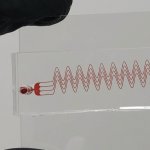
Biomedical engineering researchers at Texas A&M University designed a medical device that mimics blood vessels to design and monitor drugs for patients with clotting disorders. This approach could be especially beneficial for pediatric patients. Unlike what a biology textbook may show, blood vessels are not straight cylinders. They are tortuous, meaning they have complex curves, spirals and…
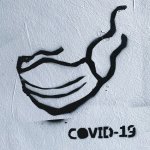
At least half of all patients who survive treatment in an intensive care unit will experience at least one of a triad of problems associated with post-intensive care syndrome, or PICS, and this may be true for people recovering from COVID-19 following ICU care. PICS can manifest as problems with physical function, cognition and mental health, according to a fact sheet from the American Thoracic…
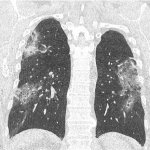
As radiologists worldwide continue to share their knowledge of COVID-19 to help fight the pandemic, two chest experts from France and Spain talked about their country perspectives and the practical experience at their hospital in a dedicated online session organized by the European Society of Radiology (ESR).
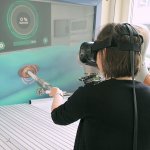
More than 200,000 patients undergo hip replacement surgery in Germany each year. To avoid complications and extend the lifespan of the artificial joint, the implants must be fitted precisely in the acetabulum (hip socket). The procedure, particularly milling the acetabulum, is not only difficult but also the technique is difficult to teach and train.

The sense of fear is palpable in the images and videos of hospital intensive care units (ICUs) and emergency departments that are broadcast on television and posted on social media. Fear and heartbreak can be heard in the voices of physicians and nurses who describe what they are experiencing.
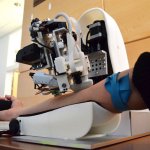
Engineers at Rutgers University have created a tabletop device that combines a robot, artificial intelligence and near-infrared and ultrasound imaging to draw blood or insert catheters to deliver fluids and drugs. Their most recent research results, published in the journal Nature Machine Intelligence, suggest that autonomous systems like the image-guided robotic device could outperform people on…
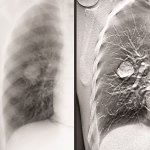
Carestream’s Digital Tomosynthesis (DT) functionality—a three-dimensional extension of general radiography—has received 510(k) clearance from the U.S. Food and Drug Administration (FDA). Simplifying workflow and reducing exam time, DT technology is an upgradable option on the Carestream DRX-Evolution Plus System, a versatile digital radiography system that can perform a wide range of…

A preliminary study has found that when young, healthy men were deprived of just one night of sleep, they had higher levels of tau, a biomarker for Alzheimer’s disease, in their blood than when they had a full, uninterrupted night of rest. The study is published in the January 8, 2020, online issue of Neurology, the medical journal of the American Academy of Neurology. Tau is a protein found in…

Periprosthetic joint infection (PJI) is on the increase internationally. In Germany, for example, around 14,500 cases of PJI in hip and knee replacements occur annually. 5,100 of those are caused by multidrug resistant pathogens. ‘Eighty-seven percent of those affected die within five years,’ orthopaedic surgeon Professor Rudolf Ascherl MD pointed out during the Heraeus Symposium held at the…
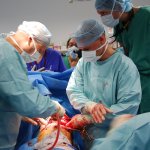
War wounds sustained by frontline soldiers or civilians usually need urgent, specialist, trauma surgery. Over the last two decades much has been learned from injuries sustained during conflicts in, for example, Afghanistan and Iraq. In early June, during a Catastrophe and War Wound key session at the European Wound Management Association conference in Gothenburg, specific remedial approaches to…
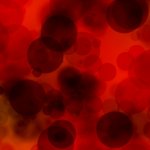
Proteins in our blood could in future help provide a comprehensive ‘liquid health check’, assessing our health and predicting the likelihood that we will we will develop a range of diseases. Preventative medicine programmes such as the UK National Health Service’s Health Check and Healthier You programmes are aimed at improving our health and reducing our risk of developing diseases. While…
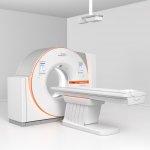
Curious about how intelligent imaging can work with you in CT? Then join us at this year’s RSNA, North Hall, Booth #7530, where you can experience our new Somatom X.cite and myExam Companion.
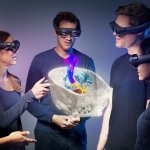
Digital medical technology company Brainlab announced the launch of Mixed Reality Viewer, which brings spatial computing into daily clinical practice for surgical plan review, medical student training and patient consultation. Brainlab Mixed Reality (MR) Viewer uses the head-mounted display Magic Leap One from Brainlab strategic development partner Magic Leap to add a new dimension to patient…

Whilst researchers acknowledge ultrasound, when used as a tool to assess intracranial pressure in an emergency, is not a replacement for current gold standard invasive approaches, they believe it has enormous potential as a non-invasive and fast, cost-effective, and patient-friendly way to assess possible brain injury at a patient’s bedside. Consultant anaesthetist Dr Chiara Robba, a specialist…
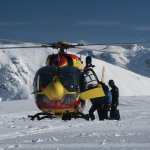
Dr Philippe Mahiou practices anaesthesia in the Grenoble area, splitting his time between a private clinic and working as a helicopter doctor to attend mountaineering accidents. As part of his work, Mahiou routinely uses ultrasound, and understands the importance of the technology to guide anaesthesia in the operating room and assess patients in the field. When anaesthetist Dr Philippe Mahiou…

Consider the diagnostic and therapeutic possibilities resulting from access to pertinent data from thousands of anonymized patient medical scans. What new patterns, options, or evidence for actionable insights could be derived from all this information? Cloud-based data is easily accessible via computer, smartphone, or tablet and is a valuable complement to the insights from the millions of…
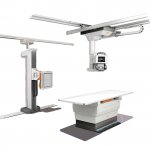
Carestream will introduce a three-dimensional extension of general radiography through its Digital Tomosynthesis (DT) functionality (Pending FDA 510(k) clearance) at this year’s Radiological Society of North America conference in booth #7513, North Hall. Simplifying workflow and reducing exam time, Carestream’s DT technology is an upgradable option on the DRX-Evolution Plus System. This DT…

Unlike other surgical specialties, ear nose and throat (ENT) has been poorly served by the introduction of robotic platforms to enhance procedures. Since the da Vinci system first gained FDA approval in 2000, robot-assisted surgery has become commonplace in many specialties, including neurology, urology, etc. with numerous other general surgical applications. However, existing systems including…
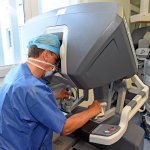
Is it possible to repair the rachis without having to open the abdomen or the back? A team of French surgeons has done just that. Thanks to minimally invasive robotic surgery, exposing the patient to risky spine interventions may soon be avoidable, a leading surgeon explained. The team of neurosurgeons and vascular surgeons has, for the first time, successfully repaired the lumbar spine with the…
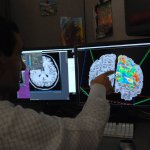
Non-invasive brain stimulation is to be trialed for the first time alongside advanced brain imaging techniques in patients who are minimally conscious or in a vegetative state. The study builds on promising results from the Centre for Human Brain Health at the University of Birmingham which suggested that non-invasive brain stimulation can improve the success of rehabilitation for non-responsive…

A medication that boosts the body’s own cannabis-like substances, endocannabinoids, shows promise to help the brain un-learn fear memories when these are no longer meaningful. This according to an early-stage, experimental study on healthy volunteers at Linköping University. The new findings give hope that a new treatment can be developed for post-traumatic stress disorder, PTSD. “We have…

On the centenary of his birth, Mark Nicholls reflects on the life and legacy of Nobel laureate Sir Godfrey Newbold Hounsfield, the man who pioneered computed tomography. It was a discovery that came from a moment of inspiration during a country walking holiday; the idea that one could determine what was inside a box by taking X-ray readings at all angles around the object. From that, Sir Godfrey…

Researchers from Chemnitz and Bremen are developing a virtual reality simulator for a particularly critical step in hip joint implantation. Each year, more than 200,000 people receive a prosthetic hip in Germany. The success of these operations has a major impact on the quality of life of those affected. However, the procedure is often difficult, particularly the step that involves the so-called…

A new study has concluded that psychiatric diagnoses are scientifically worthless as tools to identify discrete mental health disorders. The study, published in Psychiatry Research and led by researchers from the University of Liverpool, involved a detailed analysis of five key chapters of the latest edition of the widely used Diagnostic and Statistical Manual (DSM), on ‘schizophrenia’,…
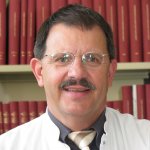
Point-of-care testing (POCT) is complex and its development continues due to digitisation in healthcare and increasing international partnerships among the healthcare actors. In a hospital, a number of factors need consideration to fully exploit the potential of bedside testing. POCT instruments and analysis methods must be thoroughly validated and quality assurance processes be in place.…

Digitalization offers great potential for hospitals: diseases can be detected earlier, internal processes more efficiently organized, health expenditure reduced and patients better cared for. Artificial intelligence, robotics, sensor technology, big data, additive manufacturing or augmented reality - the technologies for this have long been available.

Today the impressive development of drones by some people is happily regarded as the pinnacle of digitalisation in healthcare. Some groups are testing whether drones can quickly and safely deliver defibrillators to patients in need or whether they can transport laboratory samples or blood products. These developments catch lots of attention, but PD Dr Dominik Pförringer, trauma and orthopaedic…

Specialists are seeing more and more repetitive stress injuries (RSI) from overuse of smartphones and tablets – the main instigators of emerging conditions like texting thumb and selfie elbow, notes UT Southwestern rehabilitation specialist Dr. Renee Enriquez. “With all overuse injuries, rest is the most important part of recovery. Complete rest is best, but since technology is a required…
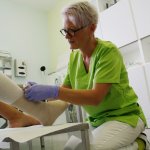
Many methods to treat current or chronic wounds are available. However, the differences in general conditions prevailing in hospital, or for out-patient care, make effective therapy more difficult. Each patient also has other preconditions for healing. Improved communication between everyone involved in the treatment would benefit patients. We see a lot of progress with the issue of “wounds”,…

Magnetic resonance imaging (MRI) exams of the knee are essential to orthopedic surgeons for diagnosing the cause of symptoms in patients with knee pain and planning arthroscopic treatment. Yet the surgeons who treat patients based on knee MRIs and the radiologists who interpret those knee MRIs often work in their own silos of specialization, rarely communicating and sharing information, according…

Mosul, Iraq’s second city, is slowly rebuilding its healthcare infrastructure after years of war and destruction. Dr Henryk Pich, a consultant anaesthetist and intensive care physician at the University of Dresden, Germany, visited the region soon after the fighting had ended, supported by the independent aid organisation CADUS. Moved by the makeshift treatment centres he witnessed in the…
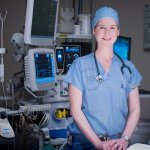
Patients who undergo heart surgery do not experience major memory changes—either better or worse—when compared with those who have a much less invasive, catheter-based procedure, according to a study published online in The Annals of Thoracic Surgery. “It was comforting to see that the differences in cognitive decline between the two heart procedures are small, even though one involves…

The Czech Republic has a long tradition of ground-breaking medical innovations. At Medica 2018, the presence of Czech companies and traders underlined that medical devices and technologies from this country have continuing strength and value. Having recorded steady growth over the past few years, the Czech medical technology sector now produces a volume of around €870 million. 13,400 people…
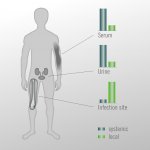
Hip and knee joint surgeries are among the most common procedures in orthopaedics and trauma surgery and complications can occur. Rare, but serious, among these is periprosthetic joint infection (PJI), which causes high costs in healthcare and stress for patients. PJI is caused by microorganisms that form a biofilm on the surface of the implant and, in this sessile state, they are difficult to…
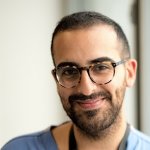
Virtual Reality (VR) technology is aiding trainee surgeons to practise complex procedures in a simulated setting, rather than learning skills on real patients. VR is also helping to demystify neurosurgery in that it enables medical students and patients to ‘enter’ and experience a neurosurgical operating theatre. Alex Alamri, a trainee neurosurgeon at Barts Health NHS Trust in London, UK,…
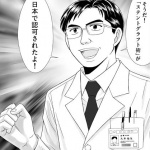
Surgeons are growing older and the lack of junior surgeons is widespread – a situation acknowledged by most experts at the annual congress of the German Society of Surgery (DGCH) in Berlin, who debated whether the need is greater to increase specialists or, on the other hand, generalists. Both sides produced convincing arguments, but a third group took an entirely different tack. In the session…
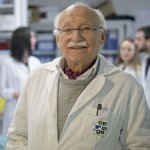
It is non-invasive, delivers a chance of early diagnosis, prognostic information and sequential monitoring, and, believes Professor Francesco Salvatore, the enormous potential of liquid biopsies has still to be reached. However, the positive results obtained so far have ‘opened the door to a promising new multi-faceted group of tumour markers, at present collectively designated “liquid…

Doctors working in the eight-bed Paediatric Intensive Care Unit (PICU) at the Ramón y Cajal University Hospital in Madrid extensively use point-of-care ultrasound to evaluate the condition of critically ill children, and they find it essential in their work, as Dr José Luis Vázquez Martínez, Head of PICU at Hospital Ramón y Cajal, with over 25 years’ experience in paediatric intensive care…

Physicians have been performing surgery with the assistance of x-ray technology for almost half a century. While this technology has been progressing steadily, its limitations continue to be a major challenge. Thus, many professionals agree: it's time for our method to be changed. Taiwan Main Orthopaedics Biotechnology introduced the worldwide first smart surgical glasses.

Neurologist who coined the phrase "Time is Brain" says message is not so simple anymore. Rather there should be no hard-and-fast rule governing when therapy can be given because strokes progress differently in different patients.
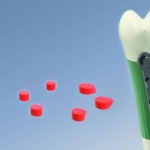
Scientists have developed a new bone engineering technique called Segmental Additive Tissue Engineering (SATE). The technique allows researchers to combine segments of bone engineered from stem cells to create large scale, personalized grafts that will enhance treatment for those suffering from bone disease or injury through regenerative medicine.
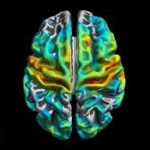
MRI has developed rapidly over the past decade in Poland, where clinicians are combining MRI with PET and CT to highlight tumour growth or regression and perfusion. ‘The fact that MRI offers new software and programmes means we can diagnose pathologies more precisely and make a diagnosis faster than a few years ago,’ explained Poland’s national advisor on radiology and diagnostic imaging…
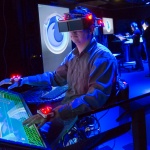
For many years, Virtual Reality (VR) has been part of the gaming sector with eye goggles for players to interact with certain scenarios. However, more recently VR has shown it can deliver specific treatments in healthcare. It is already being applied, for example, to treat phobias and as a distraction therapy for pain.

Point-of-care ultrasound is playing an important role in the anaesthesiology department at Spain’s Hospital Clinic of Barcelona. Dr Xavier Sala-Blanch, Senior Doctor and Head of Section in the hospital’s Department of Anaesthesiology and Resuscitation and Associate Professor of Anatomy in the Faculty of Medicine at the University of Barcelona, discussed how the use of ultrasound technology…
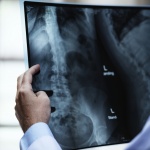
Weak, easily broken bones are an epidemic in the United States. They’re often tied to osteoporosis, a disease that causes bones to degenerate over time. This makes them less flexible, more brittle, and easier to break. According to the International Osteoporosis Foundation, more than 44 million Americans aged 50 and older either have or face the threat of developing osteoporosis due to low bone…

New research from the University of Adelaide has found that taking vitamin B6 could help people to recall their dreams. The study published online ahead of print in Perceptual and Motor Skills, included 100 participants from around Australia taking high-dose vitamin B6 supplements before going to bed for five consecutive days. "Our results show that taking vitamin B6 improved people’s…
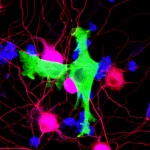
The University of Texas Health Science Center at Houston (UTHealth) has received funding through a public/private partnership for the first-ever clinical trial investigating a stem cell therapy for early treatment and prevention of complications after severe traumatic injury. The proposed Phase 2 trial is underwritten with $2 million from the Medical Technology Consortium (MTEC) and $1.5 million…

Innovative ‘artificial lungs’, which help the patients to breathe, offer less traumatic treatment for severe diseases such as acute respiratory distress syndrome (ARDS) or chronic obstructive pulmonary disease (COPD/AECOPD). Respiratory failure is one of the most frequent causes of ICU admission. It may occur inter alia in patients with ARDS, a dangerous condition when the respiratory system…

Emergency radiology is no longer a babbling field; professionalisation will bring more recognition to this young subspecialty, according to Elizabeth Dick, a London-based consultant, who will coordinate part of the new European Diploma in Emergency Radiology (EDER), the European Society of Radiology’s new tool. We interviewed the radiologist, who spoke of her daily practice and why she loves…

The television drama, Grey’s Anatomy, may be giving viewers a false impression of the realities of trauma care, including the speed at which patients recover after sustaining serious injuries, finds research published in the online journal Trauma Surgery & Acute Care Open. Unrealistic expectations of healthcare may be important in an era in which patient satisfaction is a key component of…

While a couple of glasses of wine can help clear the mind after a busy day, new research shows that it may actually help clean the mind as well. The new study, which appears in the journal Scientific Reports, shows that low levels of alcohol consumption tamp down inflammation and helps the brain clear away toxins, including those associated with Alzheimer’s disease. “Prolonged intake of…
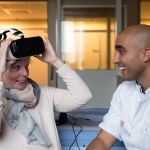
A patient walks slowly into the Intensive Care Unit (ICU). He sits on a hospital bed, hears unfamiliar beeps and other sounds. Doctors and nurses arrive to talk about all the surrounding machines and how things work in an ICU. Everything is calm and without stress for the patient as he listens to them. Then the virtual reality (VR) glasses he is wearing are removed, and he returns to reality. The…
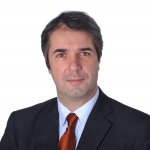
In April 2016 CEUS received the USA’s FDA approval. This year‘s RSNA Samsung Symposium ‘Contrast-Enhanced Ultrasound (CEUS): Innovations and a Problem-Solving Tool in Clinical Practice’ provided an opportunity to take stock. For European Hospital, Professor André Clevert, Director of the Interdisciplinary Centre for Ultrasound at University Hospital Munich, Germany, describes the current…
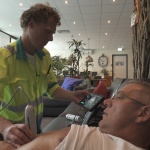
Time is of the essence in an emergency situation, and may be the difference between life and death. Ambulance crews on the front line must decide rapidly whether or not a patient is suffering from a life-threatening condition requiring specialist treatment, and point-of-care ultrasound can provide vital guidance. Geert-Jan Deddens, a nurse practitioner in emergency care with the Rotterdam…

Infections associated with osteosynthesis and prostheses are not to be underestimated: the infection rate is reported to be one to three percent after joint prosthetic surgery and five to 10 percent after osteosyntheses. ‘When you include later infections, the rate is twice as high,’ says Professor Andrej Trampuz, infectologist and Head of the Centre for Septic Surgery at the Centre of…

Doctors, materials scientists and engineers to present the latest research findings
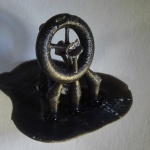
Researchers using CT scans and 3-D printing have created accurate, custom-designed prosthetic replacements for damaged parts of the middle ear, according to a study being presented at the annual meeting of the Radiological Society of North America (RSNA). The technique has the potential to improve a surgical procedure that often fails because of incorrectly sized prosthetic implants, researchers…

Training was at the heart of the biggest annual fair in the world, thanks to the newly introduced Medica Academy sessions, i.e. full-day seminars that dealt with practical questions, current techniques and advances in medicine. One of the hot topics tackled by the new format was emergency ultrasound, as renowned experts such as Dr Wolfgang Heinz from Stuttgart gave hands-on training on this…

‘Ultrasound plays a key role in diagnosis and monitoring of treatment in the A&E department,’ emphasises Professor Joseph Osterwalder, Medical Director of the Cantonal Hospital in Appenzell, Switzerland. ‘I cannot imagine emergency medicine without ultrasound.’

A preliminary human study was conducted to validate an advanced wearable sensor which has been developed by the start-up company BioBeat Technologies Ltd, comparing it to the common manometry method. The 2015 guidelines of the European Society of Hypertension on The requirements of the International Protocol (revision 2010) were used to define the difference between the commonly used device and…
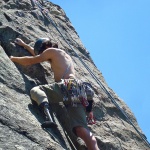
Everyone is unique – and so is human anatomy. Thus orthopaedics or implantology call for medical products that provide a perfect fit and demand is high for one-off components, or small production runs. At the same time, the materials used and manufacturing standards applied must fulfil extremely stringent quality control. This also holds for specialised surgical instruments and medical devices,…

With a scarcity of lungs available for transplantation, the use of lungs from donors older than age 60 has been shown to achieve reasonable outcomes and should be considered as a viable option, according to research published online in The Annals of Thoracic Surgery. “The availability of suitable donor lungs for transplantation continues to be a major obstacle to increasing the number of lung…

A new study led by Johns Hopkins researchers found that measures of connectivity within specific cerebral networks were strongly linked to long-term functional outcomes in patients who had suffered severe brain injury following a cardiac arrest. A description of the findings, published in October in the journal Radiology, suggests that mapping and measuring such connectivity may result in highly…
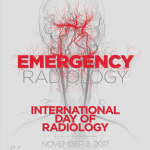
The International Day of Radiology (IDoR) will be celebrated for the sixth time on November 8, this year focusing on emergency radiology. As in previous years, more than 150 radiology-related professional societies from around the world will participate in the International Day of Radiology, holding a range of different events to celebrate, such as public lectures, department open days, national…

Immune cells are normally associated with fighting infection but in a new study, scientists have discovered how they also help the nervous system clear debris, making way for nerve regeneration after injury. In a study published in the Journal of Neuroscience, researchers from Case Western Reserve University School of Medicine showed certain immune cells—neutrophils—can clean up nerve debris,…
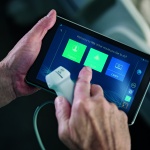
Pocket ultrasound accelerates diagnosis at the point-of-care reducing the role of the radiologist. You can buy a pocket ultrasound probe online, download an app to your smart phone and start making your own diagnoses of joints and organs. ‘It’s popping up everywhere. But is this a good thing?’ asked Michael Bachmann Nielsen, a radiologist at the Rigshospitalet in Copenhagen, during a…
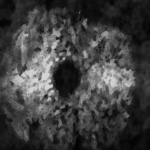
In a sharp and pointy world, wound healing is a critical and marvelous process. Despite a tremendous amount of scientific study, many outstanding mysteries still surround the way in which cells in living tissue respond to and repair physical damage. One prominent mystery is exactly how wound-healing is triggered: A better understanding of this process is essential for developing new and improved…
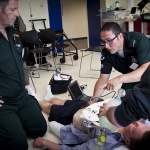
Point-of-care ultrasound plays an important role in the emergency sector, enabling hospital clinicians and paramedics responding to an urgent call for medical assistance to assess a patient’s condition. Dr Matthew Reed, an Emergency Medicine consultant at the Royal Infirmary of Edinburgh, explained how ultrasound contributes to the management of cardiac arrest.

In more than 21% of complex anatomical osteosynthesis procedures, an intraoperative improvement of the implant position or a revision of reduction has to be performed (Recum von, J. et al., Unfallchirurg 2012, 115:196-201, Die intraoperative 3D-C-Bogen-Anwendung. State of the art).

There hasn't been a gold standard for how orthopedic spine surgeons promote new bone growth in patients, but now Northwestern University scientists have designed a bioactive nanomaterial that is so good at stimulating bone regeneration it could become the method surgeons prefer.

A study examining the impact of antibiotics prescribed for nearly 1500 adult patients admitted to The Johns Hopkins Hospital found that adverse side effects occurred in a fifth of them, and that nearly a fifth of those side effects occurred in patients who didn’t need antibiotics in the first place.

Anaesthetists working in perioperative medicine have increasingly taken a whole body approach to patient evaluation known as TUBE – Total Ultrasound Body Examination – thanks to the development of point-of-care ultrasound. Dr Christophe Aveline, Consultant Anaesthetist in critical care and surgery at the Sévigné Private hospital in Rennes, is an advocate of TUBE and works closely on its…

FUJIFILM SonoSite has given two M-Turbo point-of-care ultrasound systems to the non-governmental sea rescue organisation Proactiva Open Arms, based in Badalona, near Barcelona, to support its efforts in rescuing refugees.

Point-of-care (POC) ultrasound is now commonly used in emergency departments throughout the UK. These instruments provide valuable insight for the assessment of both trauma and non-trauma patients, as well as helping to guide procedures. But for many departments, the use of POC ultrasound is limited by a lack of training and poor instrument availability. Professor Bob Jarman, Consultant in…

Paxman Coolers Limited announced today that The U.S. Food and Drug Administration (FDA) has cleared the company to market the Paxman Scalp Cooling System, a scalp cooling technology that was developed by a British family to reduce hair loss (alopecia) in breast cancer patients undergoing chemotherapy.
Coroners in England and Wales don’t seem able to agree on what caused a person’s death or whether the death merits an inquest or not - despite being faced with identical case information - reveals a small study published online in the Journal of Clinical Pathology.

Neural stem cells have been found in epileptic brain tissue - outside the regions of the brain where they normally reside. In a group of patients who underwent surgery for epilepsy, over half had stem cells where healthy individuals do not have them, according to a study from Sahlgrenska Academy.
Good news for World Antibiotics Day on November 18th. As local substances carriers, antibiotic-loaded bone cements from Heraeus help in the battle against implant-associated infections in orthopaedics and trauma surgery to prevent infection. This is demonstrated by a new randomised study from Great Britain in which the use of double-loaded antibiotic bone cement following femoral head fracture…

Dr. IlyasTugtekin, a consultant anaesthetist from Ulm University Clinic in Baden-Wuerttemberg, Germany, recently travelled to Kumasi in Ghana to help establish an ultrasound training centre for doctors all over West Africa. Funded by the Else Kröner-Fresenius Foundation (Else Kröner-Fresenius-Stiftung, EKFS) – a non-profit organisation dedicated to supporting medical research and related…

Ultrasound examinations are considered cost-efficient, fast and effective. The E-FAST (Extended-Focused Assessment with Sonography for Trauma) is a standardised examination used in accident & emergency medicine worldwide. The procedure helps to diagnose internal bleeding and organ damage in severely injured patients in the resuscitation room and, in some regions, even during emergency…

Dr. Thomas Grau, Head of Anaesthesia, Surgery, Intensive Care, Emergency Medicine and Pain at the Gütersloh Clinic, first studied ultrasound for a PhD on spinal imaging at Heidelberg University Hospital in the 1990s. 25 years on, he reflects on the role point-of-care ultrasound now plays in anaesthesia.
Mental Health Europe (MHE) is deeply worried by barriers which may prevent migrants and refugees from accessing much needed quality mental healthcare and support. MHE is further concerned by the current handling of the migration question by the EU, which has failed to address basic humanitarian and protection needs. In its most recent position paper, MHE explores the human rights, economic and…

FUJIFILM SonoSite has been named a Silver winner in the 36th Annual International Design Excellence Awards (IDEA) announced by the Industrial Designers Society of America (IDSA). SonoSite’s SII Ultrasound Machine is among more than 1,700 projects from 30-plus countries that competed in IDEA 2016.

Osteoarthritis is a debilitating condition that affects at least 27 million people in the United States, and at least 12 percent of osteoarthritis cases stem from earlier injuries. Over-the-counter painkillers, such as anti-inflammatory drugs, help reduce pain but do not stop unrelenting cartilage destruction. Consequently, pain related to the condition only gets worse.

Exuding the aroma of hi-octane fuel, the glamour of multi-coloured racing leathers, flashy sponsored brands and the glitz of the circuits, motorcycle racing can be an irresistible fast-action sport. Amid the roar of engines, the world’s leading motorcycle aces, such as Marc Marquez, Valentino Rossi or Jonathan Rea, hit around 300kmh on tracks across the globe. High-speed duels thrill the…

‘Amputation v. reconstruction’ – a vital issue – was debated by two leading surgeons during the Microsurgical Lower Limb Reconstruction session at the Advances and Controversies in Reconstructive Microsurgery (ACRM) 2016 conference, held in the United Kingdom this May. Consultant Plastic Surgeon Umraz Khan, from North Bristol NHS Trust presented a plastic surgeon’s view, while Ben…

Rectal cancer surgery - using a Da Vinci robot and conducted by Tas Qureshi, Consultant Surgeon and robotic lead at Poole Hospital NHS Foundation Trust - was beamed live from his operating theatre by satellite to an international conference of specialist doctors, student doctors and to a worldwide audience via multimedia platforms with live audio and twitter feedback.


Robot-assisted surgery still meets with considerable skepticism even though Intuitive Surgical’s Da Vinci system has been around for more than a decade. However, few surgeons and researchers are seeking ways to expand the surgical toolbox. Not so the members of the working group ‘Surgical technology and training’ at the General, Visceral and Transplantation Surgery Department, University…

3D imaging is continuously improving, with devices simultaneously becoming more manageable and mobile. The new C-arm system Ziehm Vision RFD 3D is opening up a new dimension. The device was tested by Dr Jan-Sven Jarvers, orthopaedic and trauma surgery specialist at the University Hospital Leipzig, and was introduced last September during the Eurospine Congress in Copenhagen. ‘In the future,…

No one knows for sure how they got there. But the discovery that bacteria that normally live in the gut can be detected in the lungs of critically ill people and animals could mean a lot for intensive care patients.

The massive earthquake in Nepal in April 2015 killed more than 9,000 people and injured more than 23,000. Within days, medical teams from other countries had offered services to the disaster relief effort.

Thousands upon thousands of humans have taken and are continuing to take flight from wars, persecution and economic stress, seeking the chance of survival in European and other countries. They arrive not only physically exhausted, but also in mourning for those killed in their own countries, or during hellish journeys – therefore many also suffer unimaginable mental traumas. Clearly they need…

A new technique developed by Gordana Vunjak-Novakovic, the Mikati Foundation Professor of Biomedical Engineering at Columbia Engineering and professor of medical sciences (in Medicine) at Columbia University, repairs large bone defects in the head and face by using lab-grown living bone, tailored to the patient and the defect being treated. This is the first time researchers have grown living…

New, screen-printed, flexible MRI coils may be able to reduce the amount of time it takes to get an MRI scan. Researchers funded by the National Institute of Biomedical Imaging and Bioengineering (NIBIB), part of the National Institutes of Health (NIH), have developed light and flexible MRI coils that produce high quality MRI images and in the future could lead to shorter MRI scan time periods.

Conventional therapy for ARDS patients and for patients with exacerbation of chronic obstructive pulmonary disease (COPD) has relied on invasive mechanical ventilation. Mechanical ventilation, however, has several major drawbacks: sedation has to be induced and the air being pressed into the lungs with positive pressure can damage the pulmonary alveoli or the diaphragm. Moreover, even maximum…

The 13th Symposium of the European Academy of Dermatology and Venereology, which opened its doors last Thursday 19th May and took place in Athens, Greece, came to a conclusion yesterday, after more than 2,000 participants benefited from a series of scientific sessions focusing on the latest developments in Dermatology and Venereology.

Most accidents result from ‘the human factor’ – long acknowledged in aviation. Thus all crew members receive regular safety training to help prevent errors on board and on the ground. Now experts at the German Society for Orthopaedics and Trauma (DGOU) with those from Lufthansa Flight Training have developed a similar training programme for physicians. This Interpersonal Competence Training…

To make a good framework for filling in missing bone, mix at least 30 percent pulverized natural bone with some special man-made plastic and create the needed shape with a 3D printer. That’s the recipe for success reported by researchers at The Johns Hopkins University.

Did we get all of the tumor during a cone beam CT? Can the patient hold his breath for several seconds during a CBCT acquisition? There is only one sure way to answer these critical clinical questions. Get the patient to a CT scanner.

The University Hospital Jena (UKJ) is the first one in Germany and one of the first in Europe to use the GE Revolution CT for faster diagnostics in an emergency center. Thanks to innovative technology, several steps of the examination can now be done in one single scan, exposing the patient to a quite low radiation dose.

Since launching Somatom Definition in 2005, Siemens has continued to develop Dual Source technology in order to overcome the remaining challenges in computed tomography. This significant development has made it possible to produce diagnostic images of a patient’s beating heart and coronary vessels without having to artificially lower their heart rate, for example. Scanning speeds that were…

Fujifilm Sonosite announced CE mark and 510(k) clearance for its new mountable ultrasound system, the SonoSite SII. Developed for regional anesthesia, vascular access and trauma applications, the SII empowers efficiency for clinicians through a simple, yet smart user interface that adapts to the user’s imaging needs. The system is portable and can be used across multiple hospital environments,…

Telemedicine - connecting health care providers and patients via computer or smart phone for diagnosis and treatment - has been making it easier, and more cost-effective, to "see" the doctor. Using a camera-enabled computer or smart phone, patients with common health concerns can get some diagnoses without leaving their homes. Emergency room doctors and nurses are able to communicate…

The O-arm Surgical Imaging System, has successfully established as the #1 multi-dimensional intraoperative imaging devise in spine surgery. Surgeons all over the world consider the O-arm their system of choice, convinced by image quality, ease of handling and reliability. Recently the next generation of O-arm was introduced to the market. Continuous development and innovation will allow the…

Emergency medicine requires smooth, patient-oriented and perfectly timed cooperation of several clinical disciplines.

Trauma team members are at risk of compassion fatigue and burnout syndrome, as supported by the new research by Gina M. Berg, PhD, MBA, of University of Kansas School of Medicine–Wichita and colleagues. They identify some "stress triggers" contributing to these risks, and make recommendations to help trauma teams cope with secondary traumatic stress.

The refugee wave rolls on with no ebb in sight. For many, Germany remains their travel destination. In August and September alone, tens of thousands refugees arrived in Munich, presenting the Bavarian capital with a major challenge: How could the city provide initial medical care for everyone? While the German Asylum Procedure Act governs the appropriate procedures, in this unprecedented…

HUS Medical Imaging Center, based in Helsinki, Finland, is undertaking the first European clinical test study of the new CARESTREAM OnSight 3D Extremity System in pre- and post-operative cases. The study of the new cone beam CT (CBCT) scanner and image reconstruction technology, applied within orthopaedic imaging, will last six months and will yield valuable data for both HUS and Carestream…

Locally applied antibiotics are a component of effective infection management in orthopaedics and trauma surgery. Successful concepts are based on patient-specific surgical and antimicrobial treatment. At the symposium “Infections and high-risk patients: solutions for joint replacements and traumatology” at this year’s Congress on Orthopaedics and Trauma Surgery (DKOU) in Berlin last…

Following a heart attack or other heart trauma, the heart is unable to replace its dead cells. Patients are often left with little option other than heart transplants, which are rarely available, or more recently cell therapies that transplant heart cells into the patient's heart.

Royal Philips and Banyan Biomarkers, Inc. today announced that they have entered into a multi-year joint development agreement to develop and commercialize a new handheld blood test to detect and evaluate mild traumatic brain injury (TBI) - also known as concussion - at the point of care. The new handheld test will be based on Philips’ Minicare I-20 system. The financial details of the…

Scar-free facial reconstruction is now a reality. A team led by Daniel Borsuk, a doctor at Hôpital Maisonneuve-Rosemont and a professor at the University of Montreal, recently conducted the very first such procedure in the history of plastic surgery in Canada.

Now there are two ways to remotely examine a patient with ultrasound without leaving your office. With the novel, Melody robotic ultrasound method, the expert consultant is connected to the remote patient site through a video conference link and, using a mouse-like device, the radiologist can perform the exam by manipulating an ultrasound probe positioned on the patient’s body. Report: John…

Researchers funded by the National Institute of Biomedical Imaging and Bioengineering at Tufts University and their collaborators have successfully developed a 3-dimensional (3D) tissue-engineered model of bone marrow that can produce functional human platelets outside the body (ex vivo).

A new study, published today in the British Journal of Pharmacology, by scientists from Royal Holloway, University of London, St George's, University of London and University of Surrey have identified that a drug related to commonly used diabetes treatments provides protection against terminal blood loss.

Philips Minicare delivers rule-in/rule-out readings for heart attacks in 10 minutes. It takes a lot of hard work to make things easy. Biomedical experts at Royal Philips have spent more than 10 years developing a simple test for the emergency department that, in less than 10 minutes, may indicate whether a patient suffering chest pains is having a heart attack.

Imaging modality complements a stress test in diagnosing the aetiology of chest pain, according to an expert speaking at the International Conference on Nuclear Cardiology and Cardiac CT (ICNC) held this May in Madrid.

Cardiac surgeons have finally found what cardiologists had reported missing three years ago: evidence to support the use of the oldest mechanical circulatory assist devices: IABP. Nevertheless, the findings may have only limited impact.

2.5 million radial arterial catheters (RAC) are used annually in Europe (USA: 8 million), commonly to monitor arterial blood pressure and take blood samples in surgical, A&E and ICU units. They can fail. For a study of mechanisms that might lie behind premature RAC failure and complications related to RAC in clinical use*, at team at the Radiology/Ultrasound and Anaesthesiology Department,…

40 years after the launch of its first series model, Siretom, Siemens Healthcare is looking back on the successful development of its computed tomography division. With innovations such as Spiral, Multislice, and most recently Dual Source technology, Siemens has been driving the CT market and clinical diagnostics for decades. Today, three patients are scanned with a Siemens CT system every…

Fostering a collaborative way of working won the UK’s Dartford and Gravesham NHS Trust recognition as an elite public sector healthcare employer, recently judged one of the top 100 ‘Best Places to Work’. The trust, led by chief executive Susan Acott, has created an energy-driven, patient-focused culture within the hospital, reflected by staff at all levels. This has been the driving force…

A group of passengers who thought they were going to die when their plane ran out of fuel over the Atlantic Ocean in August, 2001 have had their brains scanned while recalling the terrifying moments to help science better understand trauma memories and how they are processed in the brain.

Blood sampling via intravenous catheters frequently occurs because patients in intensive care already have intravenous catheters in place, and patients admitted to accident and emergency units are immediately set up with intravenous catheters – providing easy access to blood.

For all the advances being made in this discipline, postoperative infections remain a great challenge for orthopaedists and trauma surgeons. More than 7,000 experts from around the globe are gathering in Prague for the 16th EFORT Congress to consult on ways to optimise prevention and therapy for these dreaded complications.

Dr Sven Ballnus is Director of the Department of Intensive Care Medicine at the Hospital Centre Biel/Bienne, Switzerland, and an active member of the European Society of Intensive Care Medicine. Formerly a chief consultant in intensive care medicine at Westküstenkliniken in Heide, Schleswig-Holstein, Germany, he oversaw the development of an ultrasound course focusing on the specific needs of…

The German care system for patients with acute and unspecific chest pain is unique in Europe. The closely knit and countrywide network of accredited Chest Pain Units (CPUs) ensures fast and targeted diagnosis of acute cardiac events. The German CPUs may soon serve as a blueprint for other European countries. The German Cardiac Society (DGK) has already accredited the first institutions – others…

Prescribing antibiotics for a viral infection with fever, a cold and a cough? There is no point! This is the best-known example of over-use in medicine. There are also numerous examples of diagnostic procedures and therapies that are pointless, yet still being doled out in surgeries and hospitals – sometimes even harming a patient. This is set to change, according to the German Society of…

The recently launched Respironics V680 ventilator, from Philips Healthcare EMEA, was guided onto the market by Arne Cohrs, its Sales and Marketing Director of Therapeutic Care in Patient Care and Monitoring. We asked him about his department and the merits of non-invasive and invasive ventilators. Report: Chrissanthi Nikolakudi

Researchers at NYU Langone Medical Center project a national influx of patients who will need immediate treatment.

Sphere Medical, launches its in-line patient dedicated arterial blood gas analyser in Germany, Netherlands and Belgium at ISICEM 2015. The advanced Proxima System delivers true point-of-care testing (POCT) by enabling critical care staff to obtain frequent laboratory accurate blood gas measurements without leaving the patient’s bedside. This facilitates effective and timely clinical decisions…

For medical ultrasound it’s quick, easy and portable – and so popular with Professor Christoph Dietrich, chief of Medical Department 2 at Caritas Hospital, Bad Mergentheim, one of the first physicians worldwide to test the M9 in clinical routine. ‘The compact Mindray colour Doppler system is about the same size as a notebook computer. The imaging suite comes to the patient,’ the…

Every European knows how differences can boost cultural diversity and open unexpected perspectives – but, when it comes to having a homogeneous standard of care, they can become an absolute nightmare.

The O-arm has successfully established as a gold standard imaging device for high contrast items in the market. Surgeons, all over the world consider the O-arm their system of choice, convinced by image quality, ease of handling, and reliability.

When the Medical Radiological Institute (MRI) at the private Bethanien Hospital in Zurich and the local hospital in Ærø, Denmark, needed new fluoroscopy and radiography equipment, they investigated quality, functionality, service quality and cost. Among systems examined was Shimadzu’s Sonialvision G4, which has been completely revised, with innovations in all areas, including dose reduction…
The high-risk, rapidly changing nature of hospital Emergency Departments creates an environment where stress levels and staff burnout rates are high, but researchers at St. Michael's Hospital have identified the secret sauce that helps many emergency clinicians flourish - communication.

Iron deficiency and resulting anaemia cause fatal comorbidities worldwide. Despite this, they are generally underestimated. Professor Lothar Thomas, specialist in laboratory medicine at Central Laboratory of the University Hospital of Frankfurt/Main, is calling for more information about the new laboratory parameters for diagnosis and monitoring of iron deficiency and iron substitution therapy.

Early diagnosis and effective therapy of periprosthetic joint infections (PJI) remain a challenge for many physicians due to the complexity and heterogeneity of clinical symptoms. As individual solutions are needed, opportunities to discuss and exchange ideas are welcome, as clearly shown during the satellite symposium on the diagnosis and treatment of periprosthetic knee infections held at this…

In a 'travelogue' of clinical practices, Carestream turns up some unique solutions to shared challenges. Responsible on a global scale for sales and marketing development with Carestream, Todd Minnigh does a good bit of travelling around the world. Report: John Brosky

The number of radiological accident and emergency examinations had doubled within five years because many accident and emergency (A&E) patients are given CT scans even before having a comprehensive clinical examination. Report: Michael Krassnitzer

Dr Rip Gangahar, Trauma Lead for the Pennine Acute Hospitals NHS Trust and Chair of the International Federation for Emergency Medicine Ultrasound Group, discusses the past, present and future of ultrasound training for emergency medicine.

In the USA, some patients have bled to death while in the CT scanner because this type of examination takes too long for blunt abdominal trauma diagnosis. Report: Chrissanthi Nikolakudi

Given their quality, small size, portability and robustness, SonoSite point-of-care ultrasound systems play vital roles in hectic A&E and surgical departments, and also in monitoring patients in transit.

Accident and Emergency (A&E) teams play a key role in identifying patients with sepsis, followed by risk stratification for severe sepsis and septic shock, initiating resuscitation and treatment, and ensuring the correct onward management of patients identified with sepsis. Report: Mark Nicholls
Curetis AG, a developer of next-level molecular diagnostic solutions, today announced it has joined the European Prosthetic Joint Infection Cohort Study (EPJIC).

The University Medical Center in Utrecht (UMCU), The Netherlands, is in the process of creating a multidisciplinary centre of excellence, able to manage resources efficiently while delivering the highest level of patient care and clinical research.

The risk of terrorist attacks, nuclear-radiological hazards, power outages and epidemic-pandemic infections as well as earthquakes, hurricanes, tsunamis and fires are increasing worldwide. Mass casualty incidents, or MCIs, provide a constant reminder of why hospitals need a plan in place to be able to function optimally during and after a catastrophe.